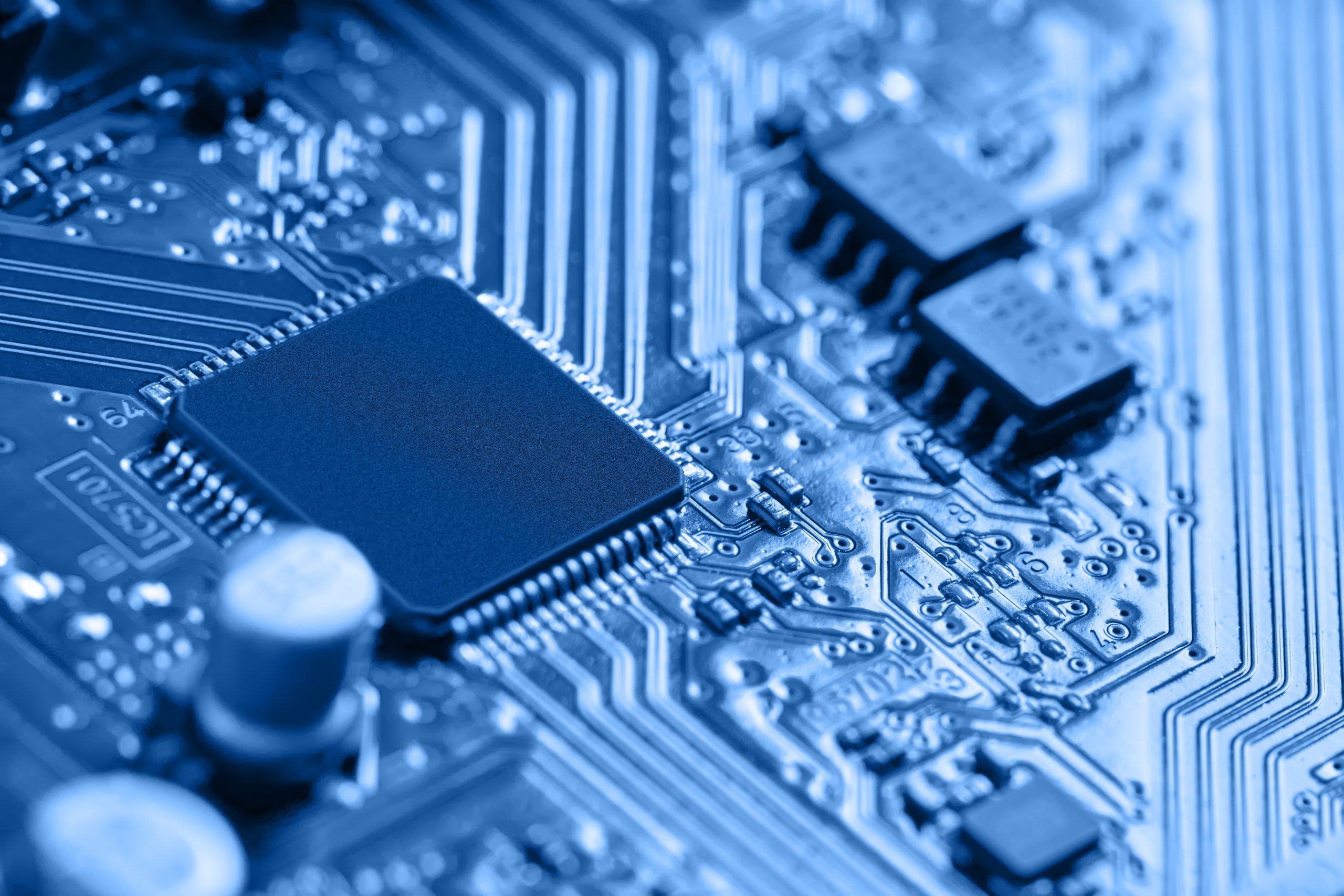
Amid NVIDIA Corporation’s (NVDA) macroeconomic hurdles and lofty valuation, opportunities for superior returns lie in the dynamic landscape of chip stocks. Thus, one could invest in Diodes Incorporated (DIOD), ROHM Co., Ltd. (ROHCY), and Everspin Technologies, Inc. (MRAM), all thriving in the chip industry's growth.
Let’s understand this in detail.
A few months ago, NVDA's stock seemed impervious to decline, initially driven by the buzz surrounding the rise of generative AI. As the company showcased its ability to capitalize on surging demand for AI chips, its shares continued their ascent, displaying resilience and profitability.
Currently, the company faces significant macroeconomic hurdles as the United States expands export restrictions on NVDA’s advanced AI chips, including A100 and H100 models, to Middle Eastern countries beyond China. While NVDA predicts no immediate major financial impact, concerns about its long-term prospects could persist.
The expanded restrictions could disrupt NVDA’s global market access and affect its ability to serve key customers in emerging AI markets. Any prolonged escalation of these trade restrictions could lead to uncertainties in the company’s supply chain and financial stability, posing a risk to its long-term growth and market position.
NVDA's valuation also appears significantly elevated. In terms of forward non-GAAP P/E, the stock is trading at 39.80x, 81.5% higher than the 21.93x industry average. Its forward EV/Sales of 19.74x is 651.8% higher than the 2.63x industry average. Moreover, the stock’s forward EV/EBITDA multiple of 37.86 is 175.2% higher than the industry average of 13.76.
Conversely, the broader semiconductor industry is undergoing substantial expansion. A plethora of applications, including AI, AR/VR, IoT, autonomous vehicles, electric vehicles, HPC, aerospace, satellite communications, 5G/6G, smart cities, health tech, and more, all reliant on semiconductor advancements, are propelling the sector's growth.
According to a report by Custom Market Insights, the global semiconductor chip market is expected to grow at a CAGR of 7.1% and reach $1.12 trillion by 2032.
Furthermore, the CHIPS and Science Act has earmarked $52.70 billion to enhance American semiconductor research and development, manufacturing, and workforce training. This includes $39 billion for manufacturing incentives and $500 million for international ICT security and semiconductor supply chain initiatives.
Within a year of the Act being signed into law, companies have unveiled investments worth $166 billion in semiconductor and electronics manufacturing. Since the start of the Biden-Harris administration, companies have pledged more than $231 billion in commitments for semiconductor and electronics investments within the United States.
Considering the outlined factors, DIOD, ROHCY, and MRAM could offer more favorable investment opportunities compared to NVDA, capitalizing on the prevailing industry growth trajectories. To that end, let us dive into the fundamentals of these three Semiconductor & Wireless Chip industry picks, beginning with number three.
Stock #3: Diodes Incorporated (DIOD)
DIOD manufactures and supplies application-specific standard products across discrete, logic, analog, and mixed-signal semiconductor markets. The company caters to industrial, automotive, computing, communications, and consumer sectors through a network of direct sales, marketing teams, independent representatives, and distributors.
On September 19, DIOD launched a high-sensitivity Hall-effect sensor portfolio known as the AH39xxQ series. These robust devices offer precise speed and direction data or two independent outputs. Designed for industrial and automotive applications, they could enhance DIOD's competitive edge in these sectors.
On September 14, DIOD expanded its product range with the introduction of two automotive-compliant low dropout (LDO) voltage regulator series: the AP7583AQ and AP7583Q. These LDOs, tailored for battery-connected automotive applications, position DIOD to meet the demands of critical microelectronics hardware in the automotive sector.
The expansion could enhance DIOD's market presence in segments such as body control modules, in-vehicle networking transceivers, Electric Vehicle (EV) battery-management systems, exterior lighting infrastructure, and instrumentation clusters, thereby strengthening its competitive edge and revenue streams.
For the second quarter that ended June 30, 2023, DIOD’s non-GAAP EBITDA increased 2.1% year-over-year to $133.45 million. Its net income and EPS attributable to common shareholders grew 2.3% and 1.1% from the prior year’s quarter to $82.02 million and $1.77, respectively.
Furthermore, as of June 30, 2023, the company’s total assets stood at $2.34 billion, compared to $2.29 billion as of December 31, 2022.
For the fiscal year ending December 2024, DIOD’s revenue is expected to increase 2.3% year-over-year to $1.82 billion. The company’s EPS for the next year is estimated to grow 4.9% from the previous year to $5.80. Also, the company surpassed the consensus revenue and EPS estimates in three of the trailing four quarters.
Shares of DIOD have gained 18.7% over the past year to close the last trading session at $78.69.
DIOD’s sound fundamentals are apparent in its POWR Ratings. The stock has an overall rating of B, equating to Buy in our proprietary rating system. The POWR Ratings are calculated by considering 118 different factors, each weighted to an optimal degree.
DIOD has an A grade for Value and a B for Momentum. It is ranked #12 in the 91-stock Semiconductor & Wireless Chip industry.
In addition to the POWR Ratings I’ve just highlighted, you can see DIOD’s ratings for Growth, Stability, Quality, and Sentiment here.
Stock #2: ROHM Co., Ltd. (ROHCY)
Based in Kyoto, Japan, ROHCY is a comprehensive provider of ICs encompassing memory, amplifiers, power management, motor/actuator drivers, sensors, and more. The company operates through three segments: LSI; Semiconductor Devices; and Modules.
On July 12, ROHCY announced reaching a preliminary agreement with Solar Frontier K.K. to acquire assets from Solar Frontier's former Kunitomi Plant in Japan. The strategic acquisition, slated for October 2023, is expected to bolster ROHCY's primary production facilities.
Recognizing the surging demand for power and analog semiconductors, ROHCY aims to strengthen its position in the semiconductor market, especially in silicon carbide (SiC) power devices. By expanding production capacity, ROHCY could ensure a reliable supply chain for its customers, aligning with the evolving industry needs and securing its foothold in this growing market.
On June 19, ROHCY established a pivotal long-term supply partnership with Vitesco Technologies, a prominent manufacturer of modern drive technologies. This billion-dollar agreement, extending until 2030, secures critical capacity for energy-efficient silicon carbide power semiconductors.
In the thriving automotive sector, SiC holds the key to heightened efficiency. With ROHCY expected to capture over 30% of this expanding market, the collaboration with Vitesco Technologies represents a strategic alliance for deeper market penetration and growth.
For the fiscal 2024 first quarter that ended June 30, 2023, ROHCY’s comprehensive income increased 5.2% year-over-year to ¥50.74 billion ($339.75 million). As of June 30, 2023, the company’s total non-current assets came in at ¥503.55 billion ($3.37 billion), compared to ¥469.30 billion ($3.14 billion) as of March 31, 2023.
In addition, its total assets amounted to ¥1.15 trillion ($7.71 billion), up from ¥1.12 trillion ($7.52 billion) as of March 31, 2023.
For the fiscal year ending March 2024, analysts expect ROHCY’s revenue to increase 9.4% year-over-year to $3.52 billion. The company’s revenue for the next year is expected to grow 9.7% from the prior year to $3.86 billion. The stock has gained 9% over the past year, closing the last trading session at $38.11.
ROHCY’s positive prospects are reflected in its POWR Ratings. The stock has an overall rating of B, which translates to Buy in our proprietary rating system.
ROHCY has a B grade for Value, Stability, and Momentum. It is ranked #10 out of 91 stocks within the Semiconductor & Wireless Chip industry.
Click here to access the additional ROHCY ratings (Growth, Quality, and Sentiment).
Stock #1: Everspin Technologies, Inc. (MRAM)
MRAM manufactures and sells a range of Magnetoresistive Random Access Memory (MRAM) products. The company offers Toggle MRAM, spin-transfer torque MRAM, and tunnel magnetoresistance sensor products. Additionally, it provides foundry services for MRAM products.
In MRAM's fiscal second quarter, the company outperformed expectations by delivering revenue that exceeded the upper end of its guidance range. This achievement was made even more impressive by MRAM's adept handling of supply chain challenges in its Toggle business and its notable success in Radiation Hard programs.
Particularly noteworthy is MRAM's consistent ability to provide advanced STT-MRAM solutions for "high-density memory arrays" and "distributed configuration memory" tailored for instant-on FPGAs with multiple-time programmability. These successes position MRAM as a resilient and innovative industry leader.
Furthermore, MRAM's thriving backlog in the industrial and automotive sectors indicates a robust foundation in its core businesses. This financial stability, coupled with its ongoing technological advancements, sets MRAM on a promising trajectory for future growth and solidifies its reputation as a reliable player in the semiconductor market.
For the second quarter that ended June 30, MRAM’s total revenue increased 7.1% year-over-year to $15.75 million. Its adjusted EBITDA grew 66.7% from the year-ago value to $5.43 million. Also, the company’s net income and comprehensive rose 132.5% year-over-year to $3.89 million, while net income per share stood at $0.18, up 125% from the prior year’s quarter.
The consensus revenue estimate of $15.80 million for the fourth quarter ending December 2023 indicates a marginal year-over-year improvement. Likewise, the consensus EPS estimate of $0.13 exhibits an 85.7% rise from the previous year. Year-to-date, the stock has gained 82.7%, closing the last trading session at $9.83.
MRAM’s robust outlook is apparent in its POWR Ratings. The stock has an overall rating of B, translating to Buy in our proprietary rating system.
MRAM has an A grade for Sentiment and a B for Value, Momentum, and Quality. It is ranked #2 within the same industry.
Click here to access additional MRAM ratings for Growth and Stability.
What To Do Next?
43 year investment veteran, Steve Reitmeister, has just released his 2024 market outlook along with trading plan and top 11 picks for the year ahead.
NVDA shares were trading at $433.89 per share on Friday afternoon, up $3.00 (+0.70%). Year-to-date, NVDA has gained 197.01%, versus a 12.76% rise in the benchmark S&P 500 index during the same period.
About the Author: Aanchal Sugandh

Aanchal's passion for financial markets drives her work as an investment analyst and journalist. She earned her bachelor's degree in finance and is pursuing the CFA program. She is proficient at assessing the long-term prospects of stocks with her fundamental analysis skills. Her goal is to help investors build portfolios with sustainable returns.
3 Chip Stocks Beating NVIDIA (NVDA) on Wall Street StockNews.com






